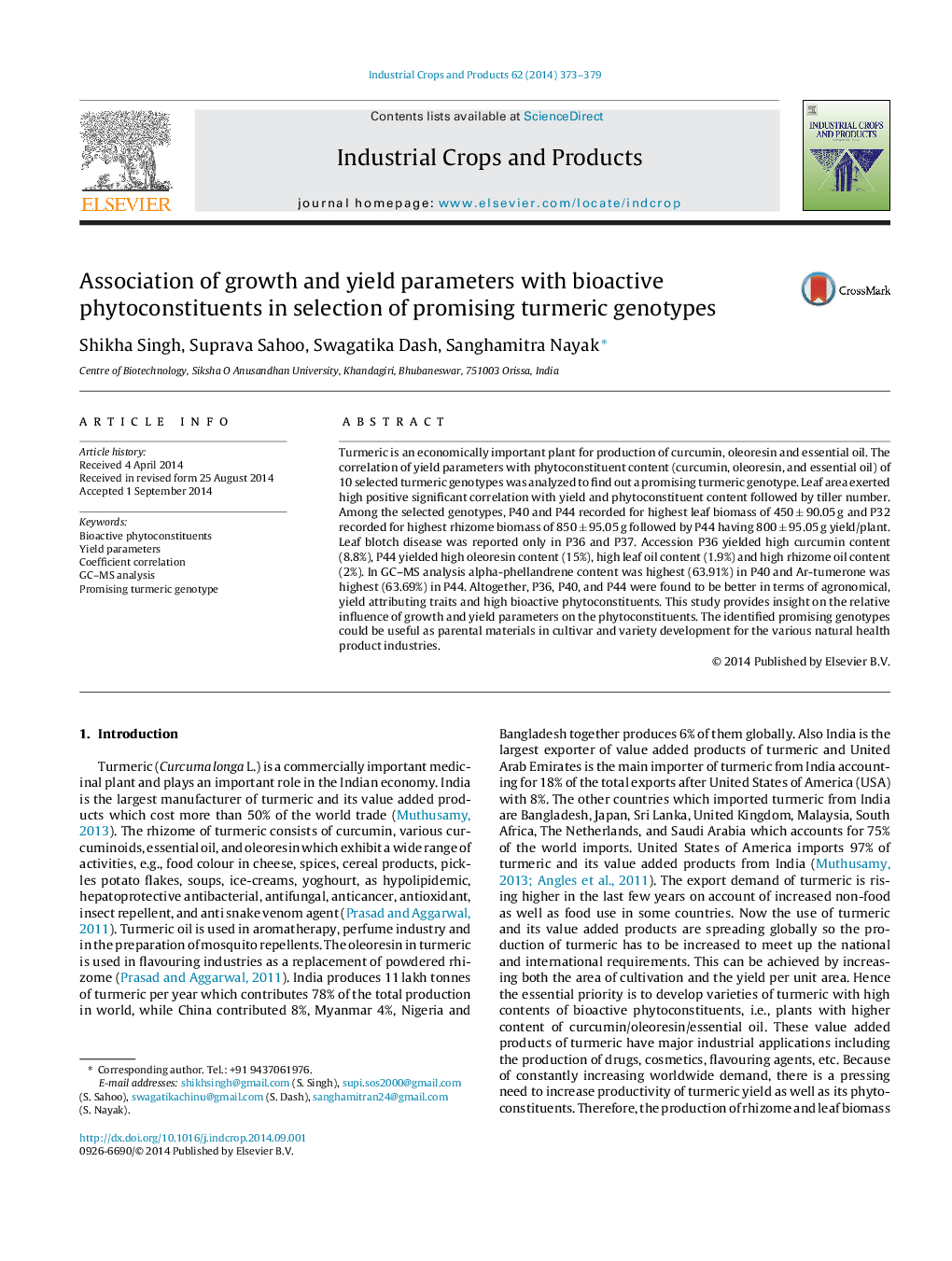| Article ID | Journal | Published Year | Pages | File Type |
|---|---|---|---|---|
| 6376449 | Industrial Crops and Products | 2014 | 7 Pages |
Abstract
Turmeric is an economically important plant for production of curcumin, oleoresin and essential oil. The correlation of yield parameters with phytoconstituent content (curcumin, oleoresin, and essential oil) of 10 selected turmeric genotypes was analyzed to find out a promising turmeric genotype. Leaf area exerted high positive significant correlation with yield and phytoconstituent content followed by tiller number. Among the selected genotypes, P40 and P44 recorded for highest leaf biomass of 450 ± 90.05 g and P32 recorded for highest rhizome biomass of 850 ± 95.05 g followed by P44 having 800 ± 95.05 g yield/plant. Leaf blotch disease was reported only in P36 and P37. Accession P36 yielded high curcumin content (8.8%), P44 yielded high oleoresin content (15%), high leaf oil content (1.9%) and high rhizome oil content (2%). In GC-MS analysis alpha-phellandrene content was highest (63.91%) in P40 and Ar-tumerone was highest (63.69%) in P44. Altogether, P36, P40, and P44 were found to be better in terms of agronomical, yield attributing traits and high bioactive phytoconstituents. This study provides insight on the relative influence of growth and yield parameters on the phytoconstituents. The identified promising genotypes could be useful as parental materials in cultivar and variety development for the various natural health product industries.
Keywords
Related Topics
Life Sciences
Agricultural and Biological Sciences
Agronomy and Crop Science
Authors
Shikha Singh, Suprava Sahoo, Swagatika Dash, Sanghamitra Nayak,
